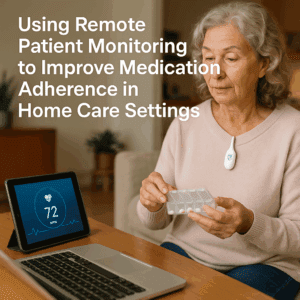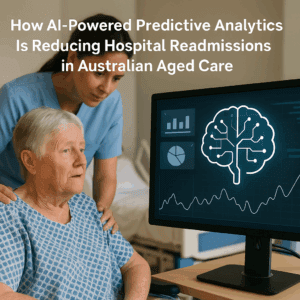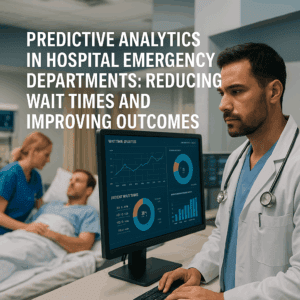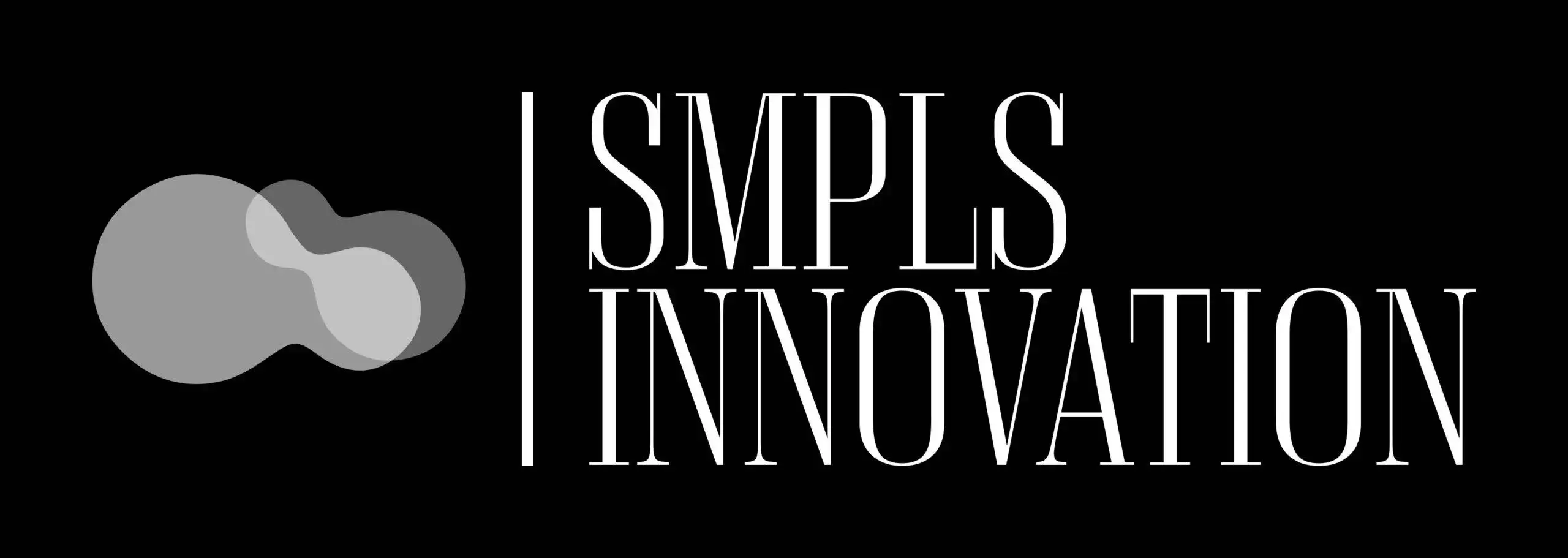How AI-Powered Predictive Analytics Is Reducing Hospital Readmissions in Australian Aged Care
By SMPLSINNOVATION — turning complex health tech into simple, smart innovation.
I. Introduction
Hospital readmissions are a big problem. They worry doctors, aged care providers, and residents too. In Australia, as our population gets older, stopping these readmissions has become very important. The challenge is keeping care great while working with limited staff and resources.
This is where AI-powered predictive analytics helps. Imagine having a smart system that can warn care teams when a resident might need to go back to hospital before it even happens. It sounds like magic, but it’s really data, machine learning, and Australian innovation.
Let’s look at how predictive analytics is changing aged care and helping to reduce hospital readmissions quickly and effectively.
II. The Current Situation in Aged Care Readmissions in Australia
Before we get into the technology, let’s look at what’s happening right now.
According to the Australian Institute of Health and Welfare (AIHW, 2024), about 1 in 5 aged care residents go back to hospital within 30 days of discharge. That may not sound like a lot, but it costs around $1.3 billion every year and causes stress for residents, families, and care staff.
Both the Australian Digital Health Agency (ADHA) and AIHW see hospital readmissions as a key sign that the system needs improvement. Fewer readmissions mean better care, happier residents, and less paperwork for everyone.
Top 5 Reasons for Readmissions
1. Too many medications or confusion about how to take them.
2. Worsening of chronic conditions like COPD or heart problems.
3. Falls, infections, and small injuries that could be prevented.
4. Poor communication between hospitals and aged care services.
5. Changes in memory or behaviour that go unnoticed.
These problems lead to a cycle of avoidable hospital trips — and that’s where AI can make a big difference.
III. What Predictive Analytics Means for Aged Care
Predictive analytics is a way to use data to spot patterns and predict what might happen next. Think of it like an experienced nurse who can tell when something is wrong — but instead of relying on instinct, it relies on data.
In aged care, predictive analytics looks at all kinds of information to help staff see early warning signs, so they can act before a resident needs hospital care.
Core Uses of AI in Predictive Analytics
1. Collecting information from medical records, wearable devices, and pharmacy systems.
2. Scoring each resident’s risk of returning to hospital.
3. Spotting small changes in health before they become serious.
4. Sending alerts to care teams when there’s a problem.
5. Learning and improving as more data becomes available.
6. Giving staff easy-to-read dashboards with helpful insights.
7. Helping managers plan preventive care.
8. Sharing information safely between hospitals and aged care homes.
9. Keeping families informed through apps.
10. Tracking care quality so standards stay high.
With these tools, aged care teams can give smarter, faster, and more personal care.
IV. Key Technologies and Tools Powering Predictive Analytics
All across Australia, many projects are using AI to make aged care safer and more connected.
10 Key Innovations
1. CSIRO’s Australian e-Health Research Centre – using predictive models to monitor chronic diseases.
2. Telstra Health’s AI monitoring system – linking wearable data and clinical alerts.
3. Healthdirect–AIHW partnership – building a national health data exchange.
4. Hospital-to-Home FHIR Analytics – improving communication between systems.
5. Mable’s AI tools – watching for risks from care schedules or staffing gaps.
6. Bupa’s predictive wellness dashboards – tracking high-risk residents.
7. Silverchain’s in-home AI – helping with remote care.
8. St Vincent’s Health’s fall prediction project – preventing fractures.
9. HammondCare’s dementia care model – predicting agitation and planning support.
10. Startups like PulseHealth and Cardihub – using wearables in aged care.
Data Protection and Ethics
Predictive analytics depends on secure, responsible data use. Systems must follow:
– Australian Privacy Principles for protecting sensitive data.
– Responsible AI Guidelines from the Department of Industry, Science and Resources.
– Federated learning models that keep data secure.
– Strong cloud encryption to stop hacking.
Your loved one’s information stays private and safe.
V. Real-World Examples: Predictive Analytics in Action
Here’s where predictive analytics is already making a difference.
1. Northern Health (VIC) – Cut sepsis readmissions by 22%.
2. HammondCare (NSW) – Reduced dementia-related hospital trips by 30%.
3. Bupa Aged Care – Lowered medication-related readmissions by 18%.
4. Silverchain (WA) – Cut post-discharge infections in half.
5. Southern Cross Care (SA) – Reduced fall-related admissions by 25%.
6. Uniting AgeWell (VIC) – Stopped 40% of UTI-related hospital transfers.
7. Calvary Health – Reduced heart-related readmissions after surgery.
8. Bolton Clarke (QLD) – Improved diabetes management, cutting readmissions by 17%.
9. St Vincent’s Health – Lowered COPD-related emergencies with real-time monitoring.
10. Opal HealthCare – Optimised staff schedules, preventing burnout and unnecessary readmissions.
All of these cases show that being proactive beats being reactive. Each new result helps the AI models get even better.
VI. The SMPLSINNOVATION Edge
At SMPLSINNOVATION, we believe healthcare technology should be simple, helpful, and human. We help aged care providers use predictive analytics in practical ways that make their work easier.
We help organisations:
1. Find the best AI tools for their needs.
2. Build data systems that follow Australian laws.
3. Create custom dashboards for their residents.
4. Train teams to read and act on risk scores.
5. Set up secure systems that can grow and adapt over time.
Smart tech should make care simpler, not harder — that’s our goal.
VII. Looking Ahead
By 2026, predictive analytics will likely be a normal part of aged care software in Australia. Studies suggest it could cut hospital readmissions by up to 35% among older people.
With connected health records, wearable devices, and AI insights, aged care is shifting from reacting to problems to preventing them.
The future of care is data-driven, kind, and personal.
VIII. Conclusion
Hospital readmissions have challenged aged care for years, but with AI-powered predictive analytics, Australia is finding new ways to deliver better, safer care. This technology helps care teams act early, reduce stress for residents, and build a stronger, smarter aged care system for everyone.





